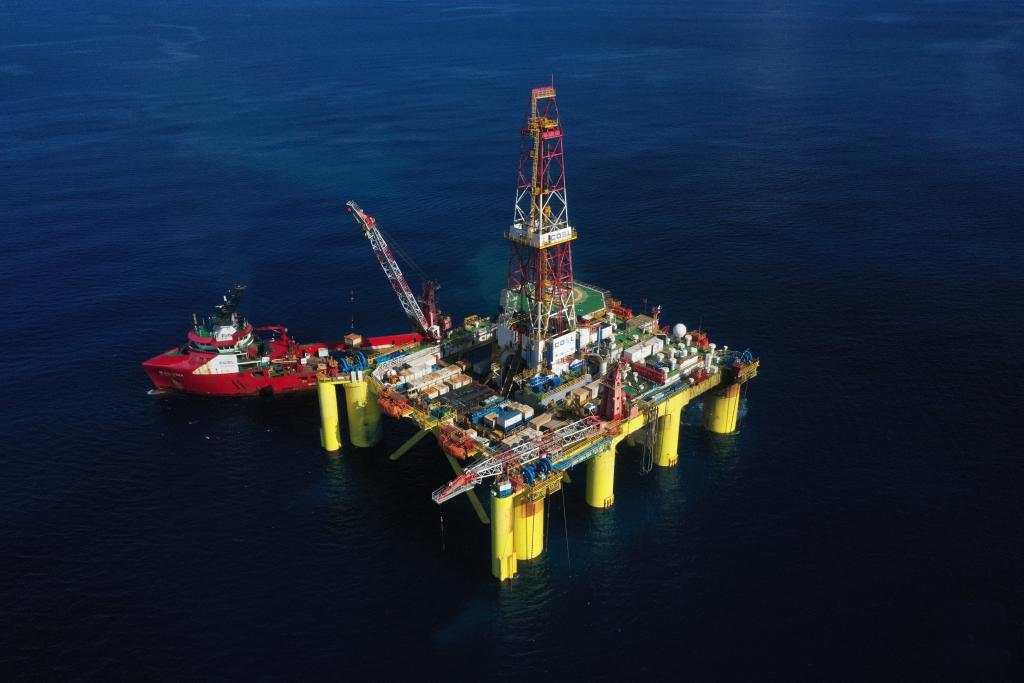On March 31, CNOOC announced China's discovery of the Huizhou 19-6 oilfield with reserves exceeding 100 million tons in the eastern South China Sea. This marks China's first major integrated offshore oilfield in deep-ultra-deep clastic rock formations, demonstrating significant exploration potential in the country's offshore deep-layer hydrocarbon reserves.
Located in the Huizhou Sag of the Pearl River Mouth Basin, approximately 170 kilometers offshore from Shenzhen, the Huizhou 19-6 oilfield sits at an average water depth of 100 meters. Production tests have demonstrated a daily output of 413 barrels of crude oil and 68,000 cubic meters of natural gas per well. Through sustained exploration efforts, the field has achieved certified geological reserves exceeding 100 million tons of oil equivalent.
The "Nanhai II" drilling platform is conducting drilling operations in the Huizhou 19-6 oilfield waters
In offshore oil and gas exploration, formations with burial depths exceeding 3,500 meters are technically classified as deep reservoirs, while those beyond 4,500 meters are categorized as ultra-deep reservoirs. Exploration in these deep-ultra-deep marine environments presents formidable engineering challenges, including extreme high-temperature/high-pressure (HT/HP) conditions and complex fluid dynamics.
Clastic rock formations, while serving as primary hydrocarbon-bearing reservoirs in deepwater settings, exhibit characteristically low permeability characteristics. This inherent petrophysical property significantly compounds the technical difficulties in identifying commercially viable, large-scale oilfield developments.
Globally, approximately 60% of newly discovered hydrocarbon reserves in recent years have been sourced from deep formations. Compared with mid-shallow reservoirs, deep-ultra-deep formations exhibit distinctive geological advantages including elevated temperature-pressure regimes, higher hydrocarbon maturity, and proximal hydrocarbon migration-accumulation systems. These conditions are particularly conducive to the generation of natural gas and light crude oil.
Notably, these formations contain substantial untapped resources with relatively low exploration maturity, positioning them as strategically critical replacement zones for sustaining future reserve growth and production enhancement in the petroleum industry.
Offshore clastic rock reservoirs in deep-ultra-deep formations tend to produce sand and silt during oil/gas extraction, posing risks of abrasion, clogging, and erosion to subsea Christmas trees, manifolds, pipelines, as well as topside processing equipment. Our Highly anti-erosion Ceramic Hydrocyclone Desanding Systems have been widely used in oil and gas fields for years. We are confident on that, in addition to our advanced desanding solutions, the newly discovered Huizhou 19-6 Oil & Gas Field will also adopt our High-efficiency Hydrocyclone Oil Removal System、Compact Injet-Gas Flotation Unit (CFU) and other products.
Post time: Apr-08-2025

